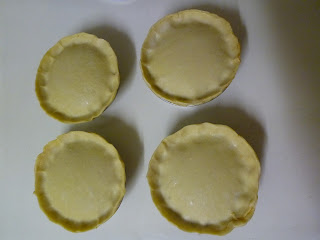The Mad Scientist was given a packet of chicken drumsticks that was going to be used for a medical training session but was surplus to requirements in the end, so began to think about creative ways to use them. Like a flash of lightning the idea of a quick and easy 'Chicken Cacciatore' was born! This simply involved combining the chicken drumsticks with a jar of Italian-flavoured pasta sauce and some halved (pitted) Kalamata olives.
Being somewhat health-conscious, the Mad Scientist removed the skin from the chicken prior to cooking.
The chicken was combined with the pasta sauce and the olives in a Pyrex baking dish and then baked at 180 degrees Celcius in a pre-heated fan-forced oven until it was bubbling and the chicken appeared to be cooked through (approximately one hour).
The finished product was served on a bed of mashed potatoes which had been 'spiced up' with a dash of pepper and chilli sauce, and received very favourable reviews!











































